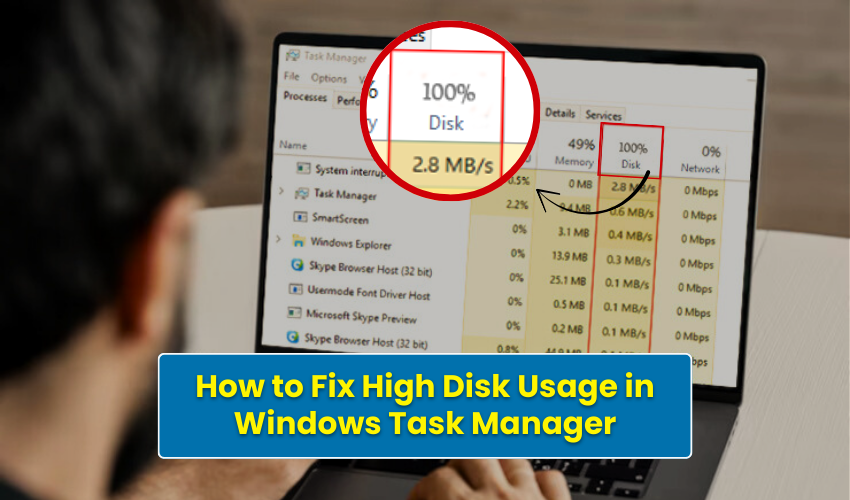How to fix high disk usage in Windows Task Manager

How to Fix High Disk Usage in Windows Task Manager
When your computer becomes slow, the first place to check is the Task Manager. One common problem is high disk usage, which can make your PC feel like it is stuck. This problem affects Windows performance and can happen for many reasons. In this guide, you will learn how to find the cause and fix it step by step.
What is High Disk Usage?
High disk usage means your hard drive or SSD is working too hard, even when you are not doing heavy tasks. You can see this in Task Manager. Press Ctrl + Shift + Esc, and go to the "Processes" tab. If the Disk column shows 90–100% most of the time, your Windows performance will slow down.
Why High Disk Usage Happens
Many things can cause high disk usage in Task Manager. Here are the most common reasons:
- Too many background apps running at once.
- Windows updates downloading or installing.
- Antivirus scans running in the background.
- Browser issues, like too many tabs open.
- Faulty drivers or outdated software.
When the disk is busy with these tasks, Windows performance goes down.
Disable Startup Programs
Many apps start when your PC turns on. These can cause high disk usage right after boot.
- Open Task Manager.
- Click the Startup tab.
- Right-click apps you don’t need at startup.
- Choose Disable.
This will help free up resources and improve Windows performance.
Check for Windows Updates
Sometimes updates fix problems causing high disk usage.
- Open Settings.
- Go to Update & Security.
- Click Check for updates.
If updates are installing, you may see high numbers in Task Manager. Once updates are done, Windows performance often improves.
Turn Off Windows Search Indexing
Windows Search indexing can sometimes cause high disk usage.
- Hit Windows + R, type services.msc, and press Enter.
- Find Windows Search in the list.
- Right-click and choose Properties.
- Set Startup type to Disabled.
- Check Task Manager to see if the disk usage drops.
Scan for Malware
Malware can keep the disk busy all the time. This not only causes high disk usage but also affects Windows performance.
- Run a full scan with Windows Security or your antivirus.
- Remove any threats found.
Change Virtual Memory Settings
Virtual memory is space on your disk used as RAM. Incorrect settings may cause high disk usage.
- Navigate to the Control Panel → System and Security → System.
- Click Advanced system settings.
- Under Performance, click Settings.
- Next, go to the Advanced tab and click Change under Virtual Memory.
- Let Windows manage it automatically.
Upgrade to an SSD
If you are using a traditional hard drive, switching to an SSD can make a big difference. It will remove most high disk usage issues and improve Windows performance.
Reset Windows if Needed
If nothing works, reset Windows to start fresh.
- Go to Settings → Update & Security → Recovery.
- Click Reset this PC.
This will clear problems that Task Manager shows and make your system run better.
Conclusion
High disk usage is a common cause of slow PCs. By using Task Manager, you can spot the issue and follow these steps to fix it. Keep your system clean, update your software, and maintain your PC for the best Windows performance.
